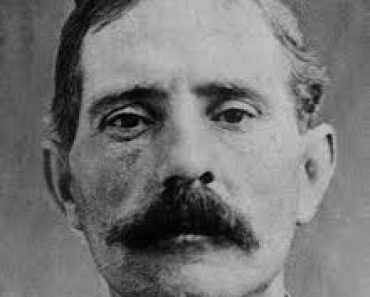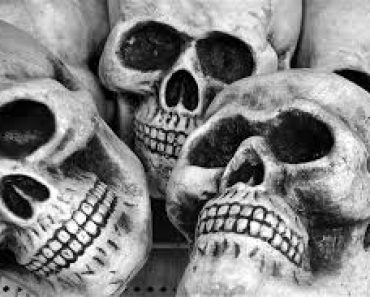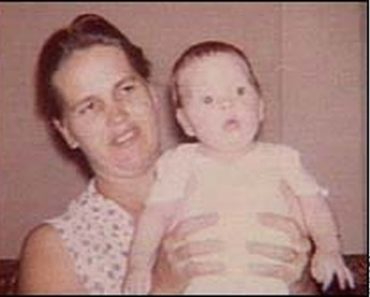Find a term:
Find Terms & Definitions.
Definition
Psychopathy is a neuropsychiatric, multifaceted antisocial personality disorder marked by deficient emotional responses, lack of empathy and poor behavioral controls, commonly resulting in persistent antisocial deviance and criminal behavior.
Psychopathy is also defined as ‘a mental (antisocial) disorder in which an individual manifests amoral and antisocial behavior, shows a lack of the ability to love or establish meaningful personal relationships, expresses extreme egocentricity and demonstrates a failure to learn from experience and other behaviors associated with the condition’.
A psychopath is a person with a chronic mental disorder with abnormal or violent social behavior.
The true definition of a ‘psychopath’, which is in fact not a diagnosis at all but rather a symptom of the true underlying ailment, that being ‘antisocial personality disorder’ or ASPD, anti-social being understood in its true sense of the word as one who goes against society, its rules and laws rather than someone who is shy or introverted. To someone who has ‘Antisocial Personality Disorder’ the rules for others do not ever apply to them.
Research suggests that psychopathy follows a developmental trajectory with strong genetic influences and which precipitates deleterious effects on widespread functional networks, particularly within paralimbic regions of the brain.
A great deal of research suggests that the core, precipitating features of psychopathy are developmental in nature, with relatively persistent traits becoming apparent before the age of 10. Furthermore, it seems these traits are predicated by significant genetic risk factors.
This notion has profound implications, not the least of which suggesting that neurocognitive peculiarities can hijack the development of our moral sensibility. It further suggests a basis for the failure of traditional remedial interventions on those with seemingly intractable behavioral problems ranging from conduct disorder in youth to the adult criminal psychopath.
Traits of the Psychopath.
It’s important to distinguish between a true psychopath and individuals who exhibit psychopathic traits. It’s possible to exhibit psychopathic traits without being an actual psychopath.
Individuals that exhibit psychopathic traits don’t necessarily engage in psychopathic behavior. Only individuals with psychopathic traits who also exhibit antisocial behavior are considered to be psychopaths.
Psychopathic traits commonly include:
1.) Antisocial Behavior – one who goes against society, its rules and laws
2.) Narcissism
3.) Superficial Charm
4.) Impulsivity
5.) Callous, Unemotional Traits
6.) Lack of Guilt
7.) Lack of Empathy
One study found that about 29% of the general population exhibit one or more psychopathic traits. But just 0.6% of the population is likely to fit the definition of a true psychopath.
Source: www.verywellmind.com
Multiple Concepts
There are multiple conceptualizations of psychopathy. These include the Cleckleyan Psychopathy conception entailing bold, disinhibited behavior and “feckless disregard” and the Criminal Psychopathy entailing a meaner, more aggressive and disinhibited conception explicitly entailing persistent and sometimes serious criminal behavior. The latter conceptualization is typically used as the modern clinical concept and assessed by the Psychopathy Checklist.
No diagnosis titled “psychopathy’
Although no psychiatric or psychological organization has sanctioned a diagnosis titled “psychopathy”, assessments of psychopathic characteristics are widely used in criminal justice settings in some nations and may have important consequences for individuals. The study of psychopathy is an active field of research. The term is also used by the general public, popular press, and in fictional portrayals. While the term is often employed in common usage along with “crazy”, “insane” and “mentally ill”, there is a categorical difference between psychosis and psychopathy.
Source: Wikipedia
Psychopathy
The triarchic model suggests that different conceptions of psychopathy emphasize three observable characteristics to various degrees. Analyses have been made with respect to the applicability of measurement tools such as the Psychopathy Checklist (PCL, PCL-R) and Psychopathic Personality Inventory (PPI) to this model.
- Boldness. Low fear including stress-tolerance, toleration of unfamiliarity and danger and high self-confidence and social assertiveness. The PCL-R measures this relatively poorly and mainly through Facet 1 of Factor 1. Similar to PPI fearless dominance. May correspond to differences in the amygdala and other neurological systems associated with fear.
- Disinhibition. Poor impulse control including problems with planning and foresight, lacking affect and urge control, demand for immediate gratification, and poor behavioral restraints. Similar to PCL-R Factor 2 and PPI impulsive anti sociality. May correspond to impairments in frontal lobe systems that are involved in such control.
- Meanness. Lacking empathy and close attachments with others, disdain of close attachments, use of cruelty to gain empowerment, exploitative tendencies, defiance of authority, and destructive excitement seeking. The PCL-R in general is related to this but in particular some elements in Factor 1. Similar to PPI, but also includes elements of subscales in impulsive anti sociality.
Triarchic Conceptualization of Psychopathy
The essence of the triarchic model is that psychopathy encompasses three distinct phenotypic constructs:
disinhibition – which reflects a general propensity toward problems of impulse control;
boldness – which is defined as the nexus of social dominance, emotional resiliency and venturesomeness
and
meanness – which is defined as aggressive resource seeking without regard for others.
These differing phenotypic components are considered in terms of relevant etiologic and developmental pathways. The triarchic conceptualization provides a basis for reconciling and accommodating alternative descriptive accounts of psychopathy, and a framework for coordinating research on neurobiological and developmental processes contributing to varying manifestations of the disorder.
Source: pubmed.ncbi.nlm.nih.gov
Personality Dimensions
Studies have linked psychopathy to alternative dimensions such as antagonism (high), conscientiousness (low) and anxiousness (low).
Psychopathy has also been linked to high psychoticism—a theorized dimension referring to tough, aggressive or hostile tendencies. Aspects of this that appear associated with psychopathy are lack of socialization and responsibility, impulsivity, sensation-seeking (in some cases) and aggression.
Otto Kernberg, a psychoanalyst and professor of psychiatry at Weill Cornell Medical College, most widely known for his psychoanalytic theories on borderline personality organization and narcissistic pathology, believed psychopathy should be considered as part of a spectrum of pathological narcissism, that would range from narcissistic personality on the low end, malignant narcissism in the middle and psychopathy at the high end.
Psychopathy, narcissism and Machiavellianism, three personality traits that are together referred to as the dark triad, share certain characteristics, such as a callous-manipulative interpersonal style. The dark triad refers to these traits with the addition of sadism.
The Dark Triad
All three dark triad traits are conceptually distinct although empirical evidence shows them to be overlapping. They are associated with a callous-manipulative interpersonal style.
- Narcissism is characterized by grandiosity, pride, egotism and a lack of empathy.
- Machiavellianism is characterized by manipulation and exploitation of others, an absence of morality, unemotional callousness and a higher level of self interest.
- Psychopathy is characterized by continuous antisocial behavior, impulsivity, selfishness, callous and unemotional traits (CU) and remorselessness.
A factor analysis found that among the big five personality traits, low agreeableness is the strongest correlate of the dark triad, while neuroticism and a lack of conscientiousness were associated with some of the dark triad members. Agreeableness and the dark triad show correlated change over development.
Ted Bundy is the perfect example of the dark triad.
Source: en.wikipedia.org
Source: ncbi.nlm.nih.gov | Wikipedia | sciencedirect.com | nobaproject.com | verywellmind.com | pubmed.ncbi.nlm.nih.gov










































